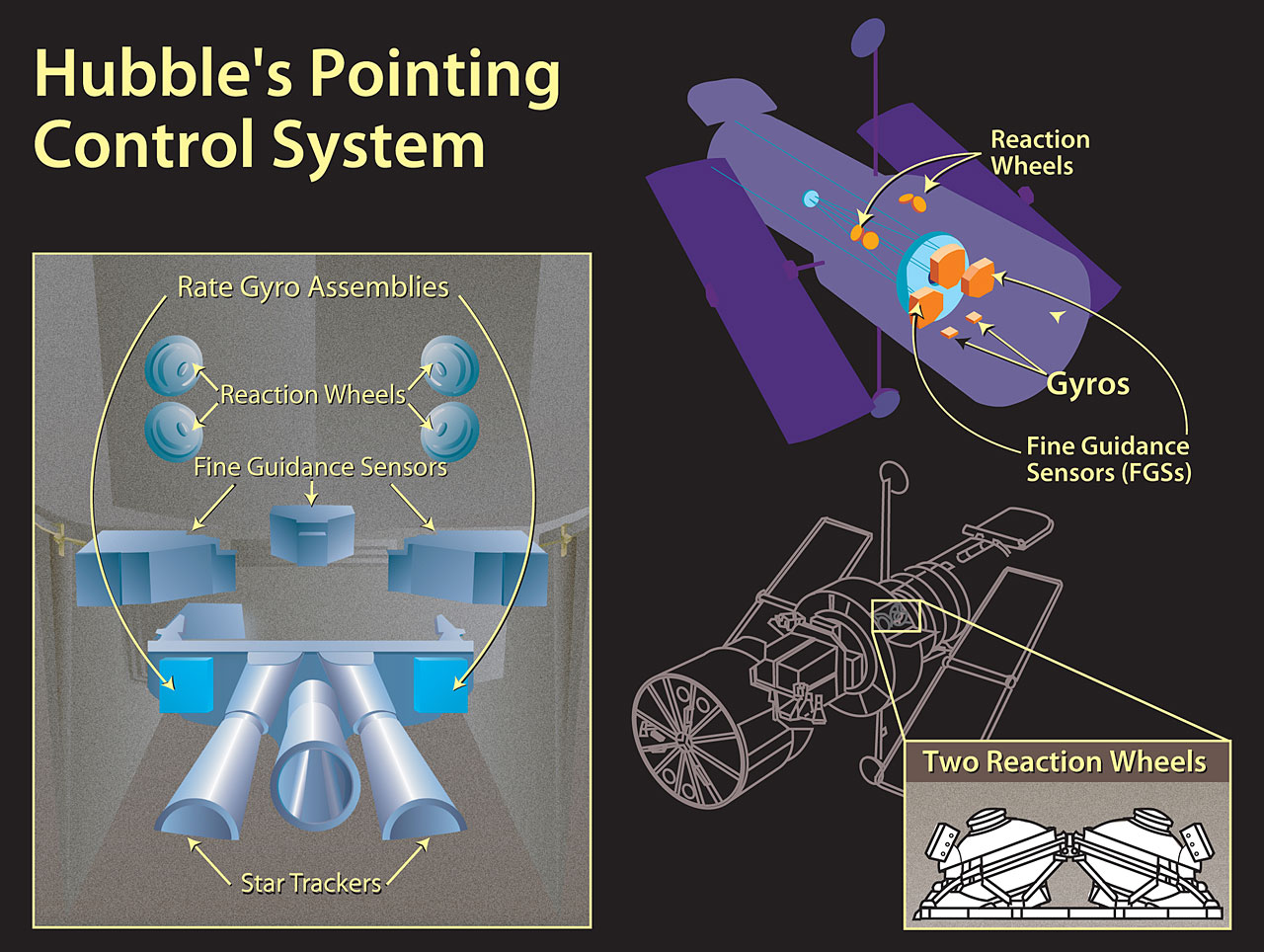Gyroscopes
During Servicing Mission 4, astronauts replaced all six of Hubble’s gyroscopes. Gyroscopes are important because they measure the rate of motion as Hubble moves and help ensure the telescope retains correct pointing during observations.
How Gyroscopes Work
Gyroscopes are devices that measure the speed at which an object is turning. They are needed to help Hubble turn and lock on to new targets.
Gyroscopes maintain orientation and provide stability in boats, aircraft and spacecraft based on the principles of angular momentum. You can experience this effect by holding a bicycle wheel by its axle and asking someone to spin the wheel. If you try to move the axle of the spinning wheel, you will feel a force opposing your attempt to move it. This force is similar to the one produced in the gyroscopes when Hubble moves.
Each gyroscope contains a wheel spinning at 19,200 revolutions per minute inside a sealed cylinder. This cylinder is immersed in a thick, motor-oil-like fluid. Fine, hair-like wires, surrounded by this thick fluid, carry electricity to the motor. Oxygen-pressurized air, used to force the thick fluid into the float cavity that contains these wires, has corroded the wires and caused them to break. Pressurized nitrogen, used in the new gyroscopes, will eliminate the introduction of corrosive oxygen.
The Best Gyroscopes in the World
Several different types of gyroscopes are available: mechanical using ball bearings; other designs using light or the frequency of a resonating hemisphere to detect movement; and gas bearings. Of these only gas-bearing gyroscopes offer the combination of extremely low noise with very high stability and resolution. Gas-bearing gyroscopes are the most accurate in the world and Hubble uses the best available.
Hubble’s gyroscopes are extraordinarily stable and can detect even extremely small movements. When used with other fine-pointing devices, they keep the telescope precisely pointed for long periods, enabling Hubble to produce its spectacular views of the Universe.
Rate Sensor Units
Each Rate Sensor Unit (RSU) contains two gyroscopes. When astronauts replace failed gyroscopes they always replace a single RSU. In 1993 on the first servicing mission, astronauts changed two units. In 1999, they changed all three units. In SM4 astronauts will, once again, upgrade all 3 of the RSU.
How many are needed?
At any given time, Hubble needs three of its six gyroscopes operating to ensure optimal efficiency. In August 2005, Hubble began operating in a new two-gyro mode to extend the telescope’s life and ensure it had at least two functioning gyroscopes until Servicing Mission 4. Although the telescope can operate on only one gyroscope if needed, the regions of the sky that on view are limited.
Within years after the last servicing missions Hubble lost three gyroscopes (all of an older design) till October 2018.
Links
Fact Sheet (PDF file)

HST Pointing Control System, composed of Gyroscopes, reaction wheels, and fine guidance sensors. |